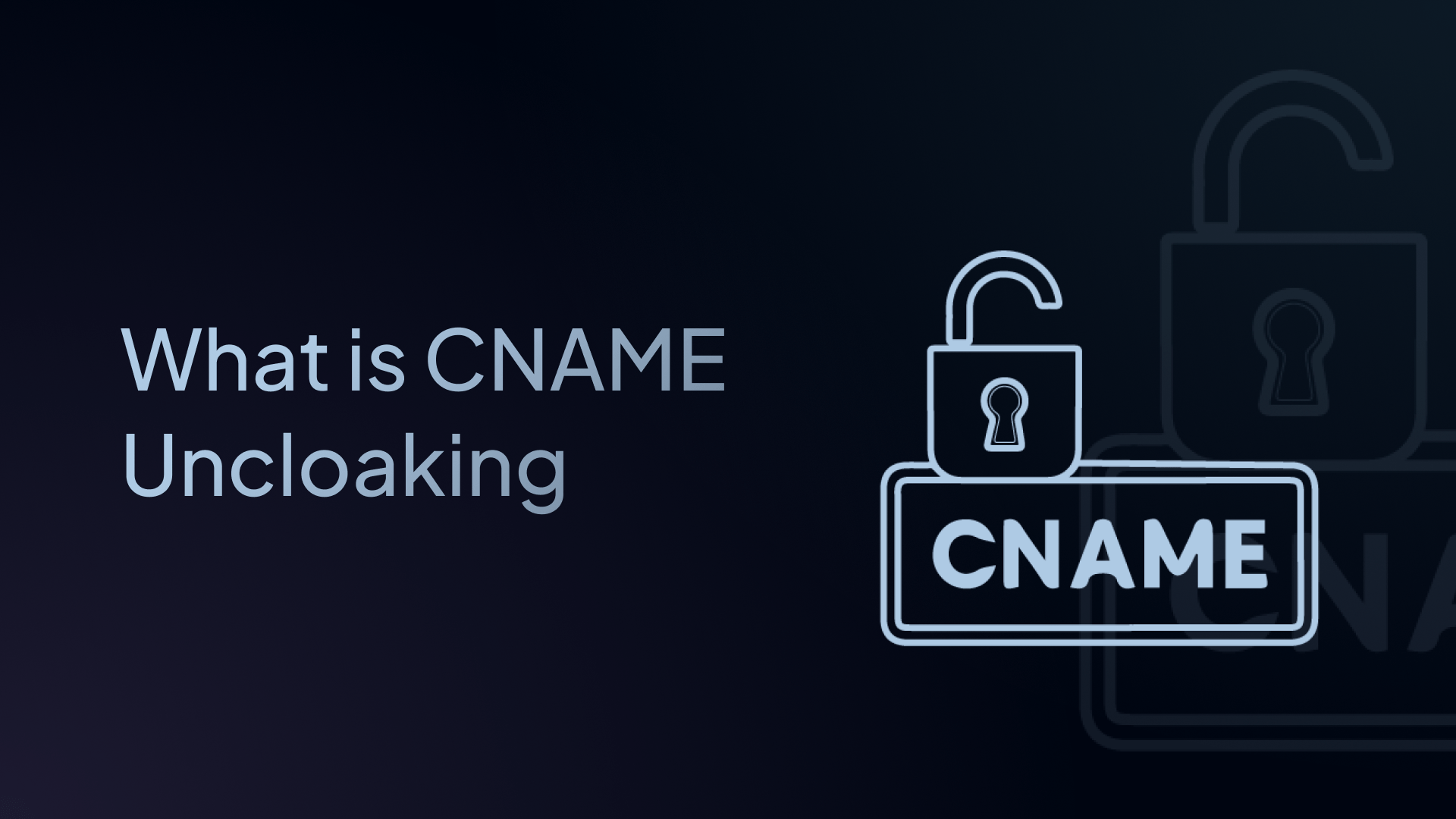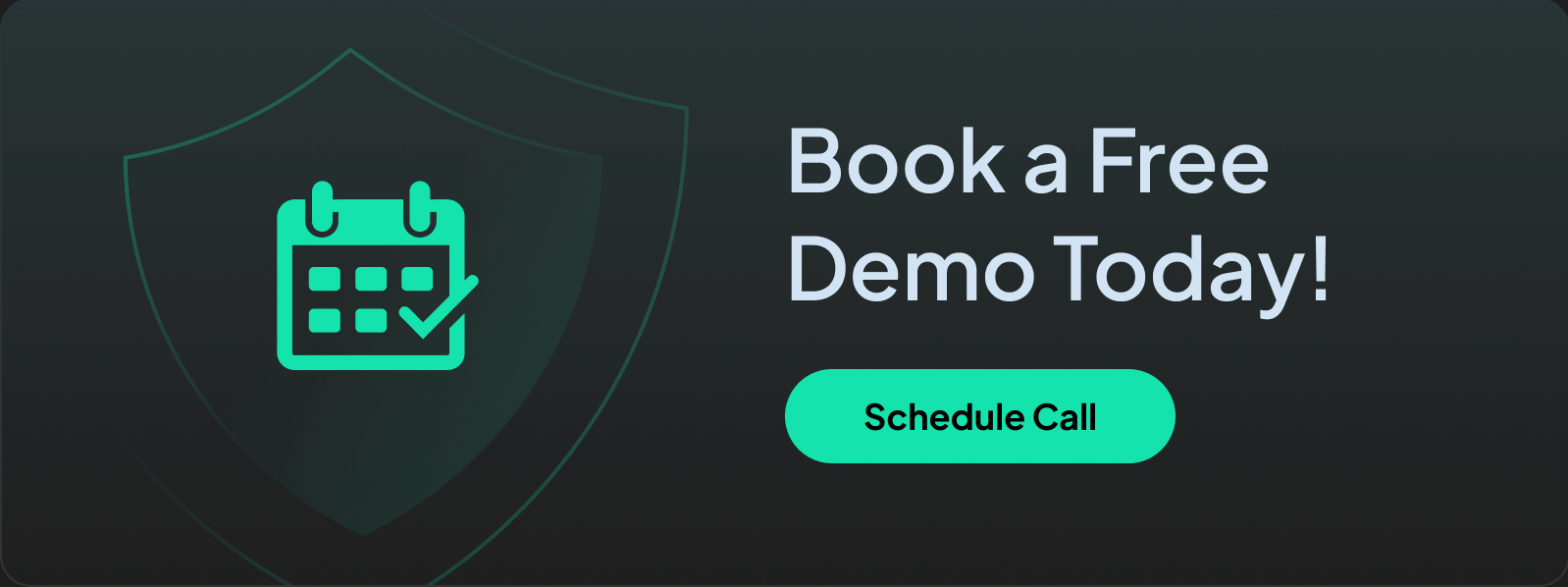What is CNAME Uncloaking?
Discover how CNAME uncloaking detects hidden trackers, boosts online security, and keeps your browsing data private.

There's a constant, unseen battle against trackers – those sneaky entities that follow your online footsteps, gathering data about your browsing habits, preferences, and identity.
While we try to prevent them from doing so, tracking companies are continuously evolving their techniques to stay one step ahead, resulting in a digital cat-and-mouse game.
One such technique they use is CNAME cloaking. However, there is a simple solution to snub their efforts, innovatively called CNAME uncloaking. But what do these terms even mean?
This article explains what CNAME uncloaking is, how it protects your privacy, and how to use it to stop hidden trackers from spying on you.
🕵 What is CNAME Uncloaking?
CNAME uncloaking is the process of revealing the true canonical domain name (real website address) to which a CNAME record points. It's typically used to detect and block third-party trackers on a web page that use CNAME records to disguise themselves as first-party requests (from the website you're visiting).
When you browse the internet, some tracking companies try to trick your browser by using fake domain names that look like they belong to the website you're visiting. CNAME uncloaking removes this disguise and shows the tracker's real identity, making it easier to block unwanted tracking.
Here's a simple example:
- What you see:
ads.news-website.com(looks innocent and trustworthy) - Real destination:
evil-tracker.com(the actual tracker) - What CNAME uncloaking does: Reveals that
ads.news-website.comis just a fake name pointing toevil-tracker.com
Before we dive deeper into CNAME uncloaking, let's understand what CNAME cloaking is and why it's a problem.
🥷 The Problem: What is CNAME Cloaking?
CNAME cloaking happens when trackers hide their true identity behind a CNAME record. It's like a spy using a fake name to avoid getting caught.
Traditionally, when you visit a website, your browser can easily spot third-party trackers because they use obviously different domain names:
- You visit:
trusted-news.com - Tracker uses:
tracker.data-harvester.com(clearly different) - Your browser and ad blockers easily block these obvious outsiders
But, trackers abuse CNAME records to trick your browser into allowing them through. This is because your browser treats web requests differently based on where they come from:
- First-party trackers: Made from the same website you're visiting (like
trusted-news.com) - Third-party trackers: Made from different websites (like
tracker.data-harvester.com)
Your browser treats these disguised third-party trackers as first-party requests (coming from the same website you trust), so they bypass most privacy tools and ad blockers, allowing them to track users without being noticed.
Why Do Trackers Use CNAME Cloaking?
Tracking companies use CNAME cloaking for several reasons:
- Bypass ad blockers that only watch for known third-party tracker domains
- Access more personal data through first-party cookies
- Evade privacy protections that limit third-party tracking
- Collect detailed browsing habits and serve ads tailored to those profiles without raising red flags
This disguise allows them to collect your data without raising any red flags.
Why is CNAME Uncloaking Important?
CNAME uncloaking is essential for modern internet privacy and security. Here's why it matters:
✅ 1. Protects Your Privacy
Without CNAME uncloaking, hidden trackers can collect sensitive information like:
- Your complete browsing history
- Personal preferences and interests
- Location data and movement patterns
- Device information and specifications
- Shopping habits and purchase history
- Social media activity and connections
CNAME uncloaking exposes these hidden trackers so they can be blocked before they harvest your data.
✅ 2. Improves Your Security
Cybercriminals often use CNAME cloaking to hide malicious websites. CNAME uncloaking helps identify:
- Phishing sites pretending to be banks or online stores
- Malware networks that infect your device
- Fake login pages designed to steal your passwords
- Command and control servers used by hackers
✅ 3. Ensures Compliance
Many data privacy regulations, like GDPR and CCPA, require websites to be transparent about data collection. CNAME uncloaking helps organizations:
- Identify unauthorized tracking on their websites
- Ensure compliance with privacy laws
- Maintain visitor trust and transparency
- Avoid costly privacy violations
How does CNAME Uncloaking Work?
CNAME uncloaking follows a simple four-step process to reveal hidden trackers:
🧩 Step 1: DNS Query Initiated
When you load a webpage, your browser needs to find the addresses for various resources like ads, analytics, and widgets. A Domain Name System (DNS) query is initiated.
🧩 Step 2: CNAME Record Discovery
The DNS resolver checks if ads.example.com is actually an alias (CNAME record) pointing to another domain.
🧩 Step 3: Chain Following
The DNS system discovers that ads.example.com is actually a fake name (alias) pointing somewhere else. It follows the trail:
ads.example.com→tracking.cdn-provider.comtracking.cdn-provider.com→collector.data-company.com
🧩 Step 4: True Domain Revealed
Once the resolver finds the real destination domain, it can check if this domain is on a blocklist. If it's a known tracker, the resolver blocks the request.
Other DNS providers offer CNAME uncloaking as a feature, but at Control D, we consider this a bare minimum when it comes to improving online security, privacy, and preventing hidden trackers from spying on you while browsing the internet.

CNAME Uncloaking Methods & Tools
There are several ways to implement CNAME uncloaking, from basic manual checks to advanced automated solutions:
🚀 Option 1: Automated DNS Protection (Recommended for Most Users)
Modern DNS resolvers like Control D automatically perform CNAME uncloaking in real-time:
- Automatic CNAME uncloaking for all queries
- Real-time threat intelligence updates
- Custom blocking policies
- Detailed analytics and logging
🚀 Option 2: Browser Extensions
Privacy-focused browser extensions can detect CNAME-cloaked trackers:
uBlock Origin:
- Supports additional filter lists for CNAME tracking
- Community-maintained tracker databases
- Custom filter creation
Privacy Badger:
- Learns tracker behavior automatically
- Blocks tracking attempts
- Easy whitelist management
Ghostery:
- Real-time tracker detection
- Privacy dashboard
- Tracker database insights
🚀 Option 3: Manual Detection (For Technical Users)
You can manually check CNAME records using command-line tools:
- Using dig command:
dig ads.example.com CNAME - Using nslookup:
nslookup ads.example.com - Using host command:
host ads.example.com
These commands show you if a domain is an alias and where it really points.
🚀 Option 4: Website Analysis Tools
Web developers and site owners can audit their sites for CNAME cloaking:
Online Tools:
- DNS checker websites
- Privacy analysis tools
- Website scanner services
Developer Tools:
- Browser developer console
- Network monitoring tools
- DNS debugging utilities
Benefits of CNAME Uncloaking
CNAME uncloaking provides multiple advantages for individuals and organizations:
✅ 1. Enhanced Privacy Protection
CNAME uncloaking stops hidden trackers from collecting your personal data. This means:
- Fewer targeted ads following you around the web
- Reduced data collection by unknown third parties
- Better control over your digital footprint
- Protection from cross-site tracking
✅ 2. Improved Security
By revealing disguised malicious domains, CNAME uncloaking helps prevent:
- Phishing attacks using fake domain names
- Malware downloads from hidden sources
- Data theft through disguised tracking scripts
- Man-in-the-Middle attacks via compromised CNAMEs
✅ 3. Better Performance
Blocking unwanted tracking requests can improve website performance:
- Faster page load times
- Reduced bandwidth usage
- Less CPU usage on your device
- Smoother browsing experience
✅ 4. Accurate Analytics
Website owners benefit from CNAME uncloaking by getting:
- More accurate visitor statistics
- Better understanding of legitimate vs. fake traffic
- Cleaner data for business decisions
- Reduced spam in analytics reports
✅ 5. Compliance and Transparency
Organizations use CNAME uncloaking to:
- Meet privacy regulation requirements
- Provide transparent data collection practices
- Audit third-party scripts and trackers
- Maintain visitor trust
Challenges With CNAME Uncloaking
While CNAME uncloaking is highly useful, it's not perfect and does come with its own set of challenges:
🚩 1. Complex DNS Chains
Sometimes CNAME records create long chains where one alias points to another, which points to another. Following these chains can:
- Slow down DNS resolution
- Increase the chance of errors
- Make real-time blocking more difficult
- Create performance bottlenecks
Solution: Modern DNS services handle complex chains efficiently with minimal impact.
🚩 2. False Positives
Not all CNAME records are used for tracking which can lead to blocking legitimate content by mistake. Sometimes legitimate services use CNAMEs for:
- Content delivery networks (CDNs)
- Load balancing
- Disaster recovery
- Geographic traffic routing
Solution: Quality CNAME uncloaking services maintain accurate allowlists for legitimate services.
🚩 3. Technical Complexity
Implementing CNAME uncloaking requires:
- Understanding of DNS protocols
- Proper configuration of blocking rules
- Regular updates to threat intelligence
- Ongoing monitoring and maintenance
Solution: Most users benefit more from automated solutions than manual configuration.
🚩 4. Privacy and Legal Considerations
In some regions, DNS monitoring and blocking might have legal implications:
- Data protection laws may apply
- Employee privacy rights
- Network monitoring regulations
- Cross-border data transfer rules
Solution: Most modern DNS services are compliant with all major regulatory standards.
Final Thoughts
CNAME uncloaking is a vital practice in the realm of DNS management. Typically used to unveil third-party trackers masking as first-party requests, it also offers insights that enhance security, optimize performance, and streamline troubleshooting.
By understanding the true canonical names behind CNAME records, organizations can better manage their web infrastructure across multiple websites, protect against trackers, and ensure efficient resource allocation.

Frequently Asked Questions (FAQs)
What's the difference between CNAME cloaking and CNAME uncloaking?
CNAME cloaking is when trackers hide behind fake domain names to avoid detection and collect your data without permission. CNAME uncloaking is the defense that reveals these hidden trackers so they can be blocked before they spy on you.
Does CNAME uncloaking slow down my internet?
Modern CNAME uncloaking has minimal impact on browsing speed. Most users won't notice any difference, and many actually experience faster browsing because fewer tracking requests are made. The privacy benefits far outweigh any minor performance costs.
Can I do CNAME uncloaking myself?
Yes, you can manually check CNAME records using command-line tools like dig or nslookup. However, automated solutions through DNS resolvers are much more effective for real-time protection across all your web browsing.
How do I know if my DNS resolver supports CNAME uncloaking?
Check your DNS provider's documentation or contact their support team. Most modern security-focused DNS services include CNAME uncloaking as a standard feature. You can also test your setup using online privacy analysis tools.
Is CNAME uncloaking legal?
Yes, CNAME uncloaking is a legitimate security and privacy practice. It's similar to how antivirus software identifies threats. However, organizations should ensure they comply with local privacy laws when implementing DNS monitoring.
Will CNAME uncloaking break websites?
Properly configured CNAME uncloaking should not break legitimate website functionality. However, some websites that rely heavily on tracking might load differently or show fewer personalized features. This is usually a sign that excessive tracking was being blocked.
How effective is CNAME uncloaking against trackers?
CNAME uncloaking can block a significant portion of hidden trackers that traditional ad blockers miss. Studies show it can improve privacy protection by 30-50% when combined with other blocking techniques.
Can trackers defeat CNAME uncloaking?
While trackers continuously evolve their techniques, CNAME uncloaking remains highly effective. As tracking methods become more sophisticated, CNAME uncloaking technology also improves to stay ahead of new threats.
Do I need technical knowledge to use CNAME uncloaking?
No technical knowledge is required for most users. Simply switching to a DNS resolver that supports automatic CNAME uncloaking (like Control D) provides immediate protection without any configuration needed.
What's the cost of CNAME uncloaking?
Many DNS providers offer CNAME uncloaking for free as part of their basic service. Premium services may offer additional features like custom policies, detailed logging, and enterprise management tools.

